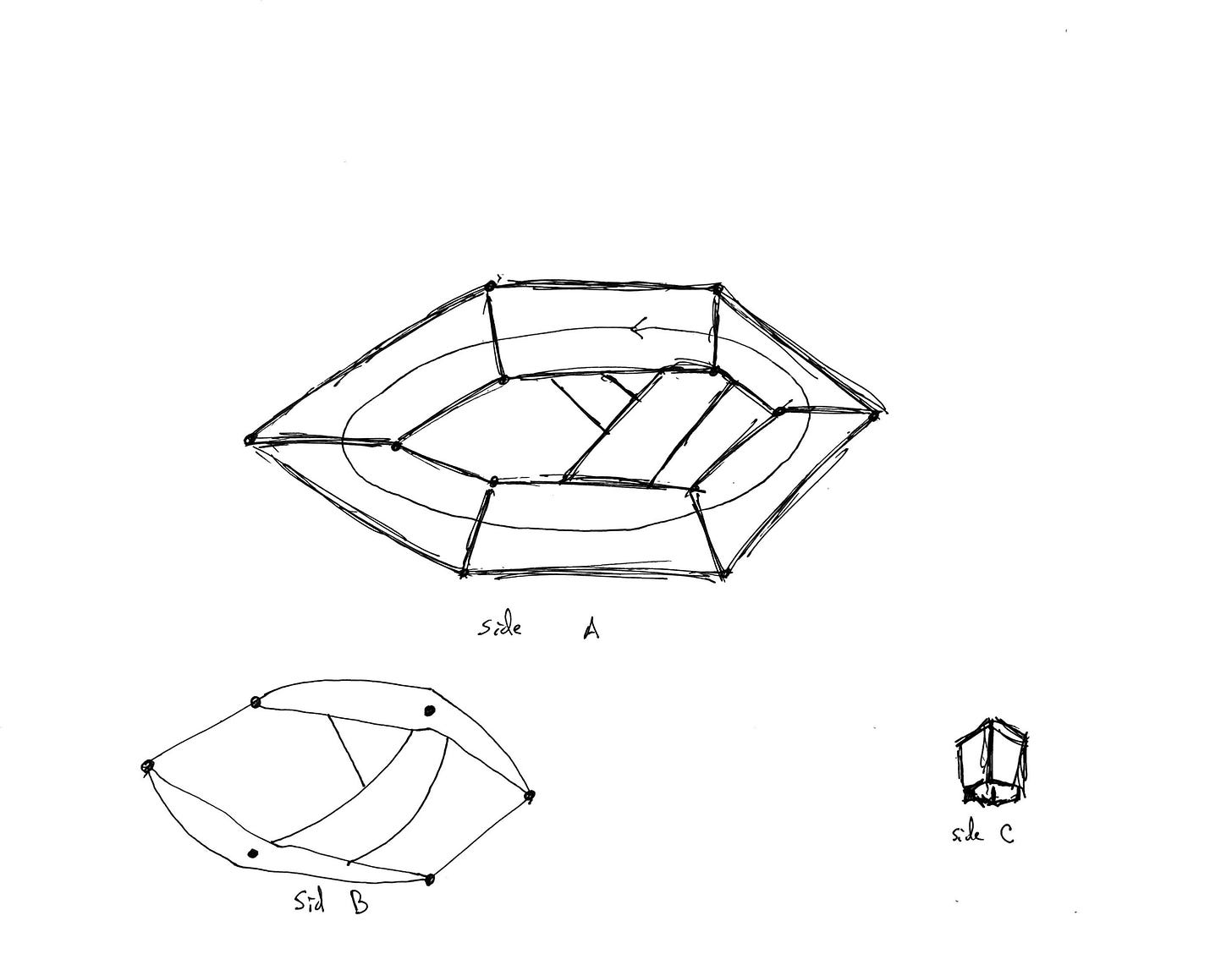One Shape to Rule Them All
A startling report out of Auckland describes the invention of a brand new and exciting shape—but what are the costs of its creation?
Auckland University’s Department of Geometrics, Shapes, Sizes and Other Measurements recently made a startling announcement of the upcoming creation of a new shape: the tridectagon. Synthetically created, not found in nature, the tridectagon has a number of sides challenging to describe.
“It’s an annular modulus. From some angles,” commented lead author and producer of the shape P. Jackson, “it looks like it has six sides—resembling books—and from others three sides. Seen from its beginning, there’s only one side. It’s truly exciting.”
Laypeople like myself would call the structure ring-like. And eerily redolent of some of Jackson’s earlier work.
Critics of the Department’s announcement question the need for a new shape. “We already have triangles, and hexagons. Even points and lines. Some of these are the most celebrated and awarded shapes in the history of geometry. Do we need one shape to rule them all?” stated a representative from New Zealand’s Department of No More Tourism.
“It’s obviously just a money-grab. Maybe a copyright thing,” said film buff Elle Rond. “Pythagoras’s license on the triangle recently changed into more permissive hands, and there’s a market to explore ways to repackage and re-market the same thing in new and ‘exciting’ ways. But we can’t forget: the classics are classic for a reason.”
And indeed the classics are classic. Jackson was the research director behind our deeper understanding of basic polygons—the triangle, heptagon, nonagon, as well as the point, to be precise—in the early aughts. His work was lauded across the planet, receiving a 95% audience rating on Rotten Trapezoids as well as a record-setting number of awards from the Academy of Shapes and Similar Enterprises, and the Rhomboids.
“His work will stand the test of time as some of the finest in shapes history,” Rond said. I, for one, came upon his work as a boy and it has shaped much of my life’s trajectory.
So with all that already under his belt, why does Jackson feel the need to return to the field? To be clear, on the tridectagon he has been named as a producer, not a director. In shapes research, this means he’ll have responsibilities related to scouting, team composition, and general objectives, but he can leave the nitty-gritty—those all-consuming decisions of where to place the vertices, which sides will be parallel to one another and at what angle they will connect—to someone else.
However, that was the promise Jackson was sold a decade ago, on the abortive and unqualified failure of the “halfling” project, which Auckland wrapped him into. That endeavor, which was poorly received by fans and critics alike, was also calumniated for being a petty money grab. Its development was riddled with disasters, injuries, and squabbles, and even saw the director, G. del Torro, quit halfway through the project. Jackson was forced to step in.
“That was disappointing,” Jackson said. “We underestimated the commitment. We thought it would only be a two-sided shape, and it ended up having to become three sides. But unfortunately, that meant each side wasn’t quite big enough to hold itself up in real space. It collapsed on itself.”
The halfling shape still grossed more than a half-billion dollars, though, Rond is quick to point out. “Yet it was slobbishly done. There were injuries in the making. A lot of animal deaths during the research process, too. But they made their money.”
Prior to his deeper work in shapes research, Jackson worked with Smoots and other unconventional units of measurement—a burgeoning field that has worked tirelessly for decades to get recognition. He was the creator behind the splatstick, a tool used to measure laughter as it mingles with disgust which Jackson himself says is “wisely overlooked.”
His breakthrough success, some have said, was lightning in a bottle. Recapturing that may not be possible. Is that why Jackson has engaged in the tridectagon project? It certain won’t make or break P. Jackson’s career which, although blemished by the “halfling” and his early works, is still lauded and spoken of in hushed whispers by charismatic fans. He doesn’t need the money. And, “the shape itself is unnecessary,” as Elle Rond put it. “We have enough shapes. It’s time for the world to devote its energies toward something else. Lines, perhaps. Perhaps there’s a new angle at which lines can meet. But shapes? Shapes are done.”
Fantastic reporting like this is only possible through the support of our readers. Please subscribe. And if you can, chip in a few dollars.





I love that shape. I can think of a million uses for it. ☺️